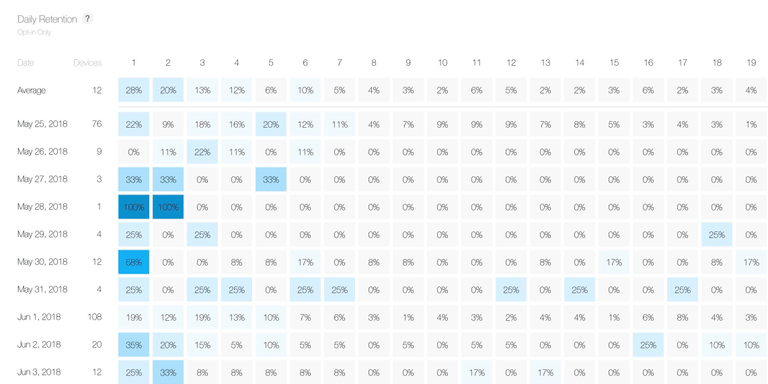Usage is important, not downloads
Building a mobile application is just the first step. You then need to have users who download it. And most importantly, that keep using it.
That's why I recurringly advise Liip clients to avoid focusing on vanity metrics such as the number of downloads of an app.
Because you could well have 10'000 new customers per day, if all delete your app in the following 10 minutes, then it's useless.
Instead, one should focus his analytics efforts on tracking app usage. This will give you stronger signals of how your mobile app product is performing.
In other words, you better have 100 downloads a month, while retaining 90% of your users, vs. 10'000 downloads a month and 1% of retention rate (i.e. 100 recurring users).
What can I do to retain my users in a mobile app?
There are two main patterns to keep your retention high: push notifications and app onboarding.
Actually there is a third one. And this third one is actually the #1 to take into consideration: build an app that solves a real user's problem.
That can sound obvious, but you should first put all your efforts into building a Minimum Viable Product that bring customers. Else, any push notifications or a better onboarding will be useless efforts.
And when I say customers, I don't mean people you get to signup via ads on Facebook or Google. I mean customers that crave to buy or download your app because it solves such a problem into their life that they can't think of another alternative.
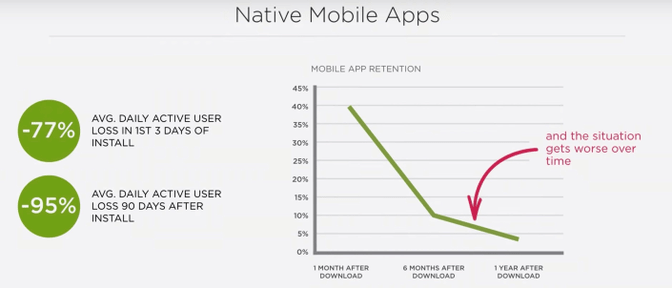
That being said, let's assume your mobile app has a purpose that drives people in. Then let see how we can bring more retention.
Why? Well, a gentle reminder about numbers:
- 25% of apps are abandoned after 1st time usage
- 34% of apps are opened 11 times or more
- 77% avg. daily active users loss in first three days after install
- 95% avg. daily active users loss 90 days after install
Another way to visualize app retention average per industry (data as of year 2017):
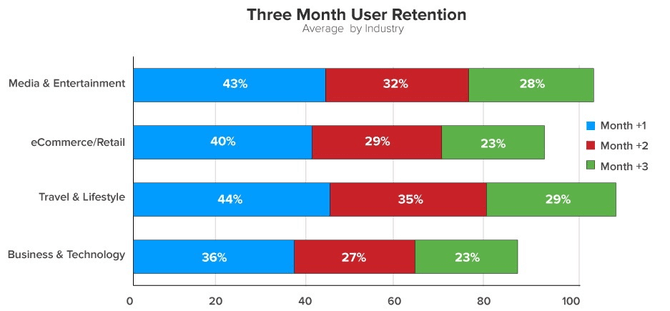
Push notifications
I will not offend you and explain what's a push notification (just in case ;)).
The role of them are simply to remember your users that you exist on their smartphone. And it indeed works.
If you look at all the data that exist, it seems like a good idea to go for push notifications:
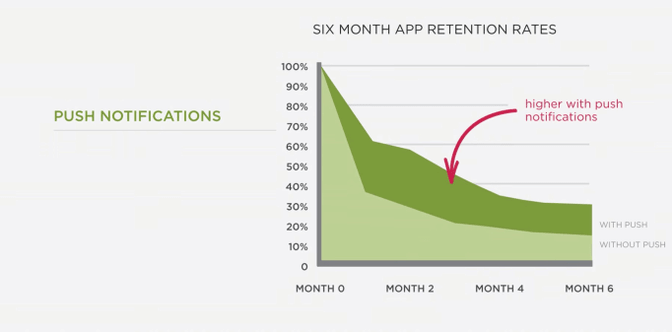
Nevertheless, your must be cautions with this tool. A push notification is like speaking face-to-face with someone. If you bother the person, they will just ask you to stop talking to them.
A good example is when Revolut sends me a push while I'm abroad in Europe to let me know the exact amount in CHF of my transaction. I feel it's like if my banker was sending me an SMS to re-assure me that all fees are under control and that I can enjoy my holidays.

On the other hand, you have Apple News who sends me a push like this without any valuable stuff for me: "See what you've been missing." When I receive this, I feel like a I'm at the train station and hear a guy yelling "Breaking news here, buy our newspaper!" At this point I just wish I enter the train and stop getting bothered by him. With push notifications it's easy, you can just turn them off.
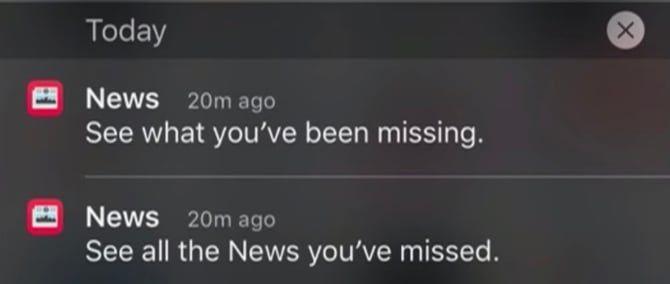
So again, if your entire business model is built on push notifications to retain users, it's similar to the ones who are built on top of spamming users with email. It won't work. It's doomed to fail.
As a Product Manager/Owner, ask yourself the following: honestly, would I enthusiastically accept this push notification myself?
Onboarding
Another key manner to retain your users is onboarding. When I say that to our Liip clients, people often picture the infamous (boring!) screens one has to swipe through at first app download.
As you can see below, major companies like Intuit, Vevo, and Google consistenly observed the same patterns during user testing:
- Nobody read any of it
- People desperately look for ways to skip it
- Some Intuit user interviews ended up in "Please make this stop!" and "You [the Product Owner] just want to make this get out of my way."
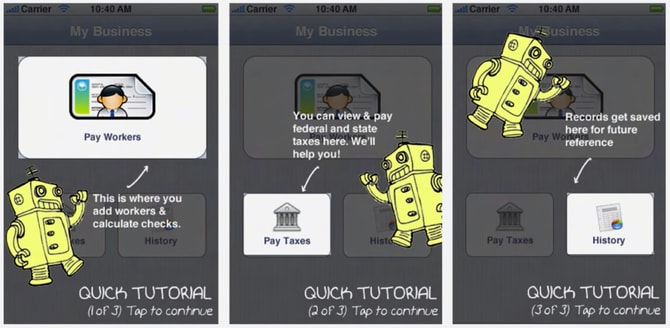
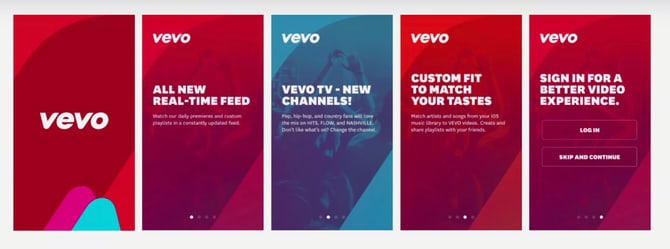

The three conclusions they all came to were best summarized by Luke Wroblewski at the last Conversions@Google conference:
- Get to product value asap - but not faster
- Ruthlessly edit distractions from product value (cut, cut, and cut again as our partner QoQa learnt to do it :))
- Teach in the moment with integrated UI — I highlight the last part because research shown that when the UI is consistent with the corporate identity, then conversion increase, else it decreases (you see it as these pesky Windows 95 popups you cancel by default!)
Keeping the same examples as above, below is how it translates:
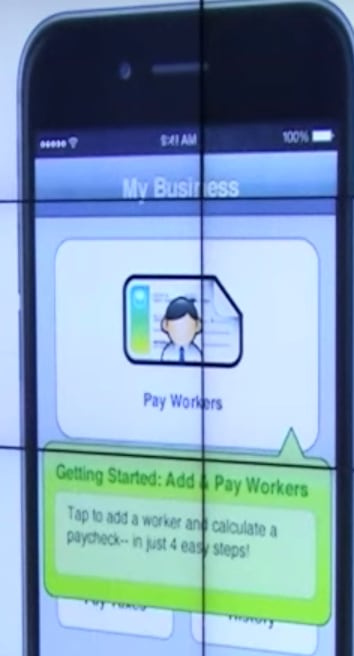
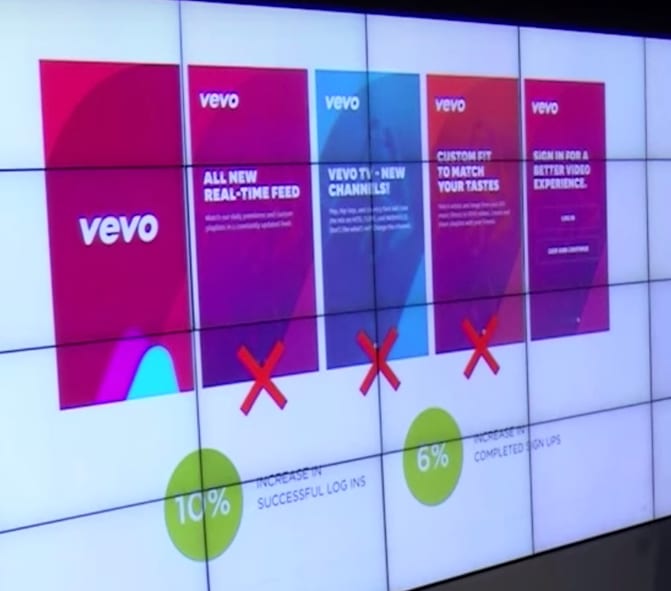
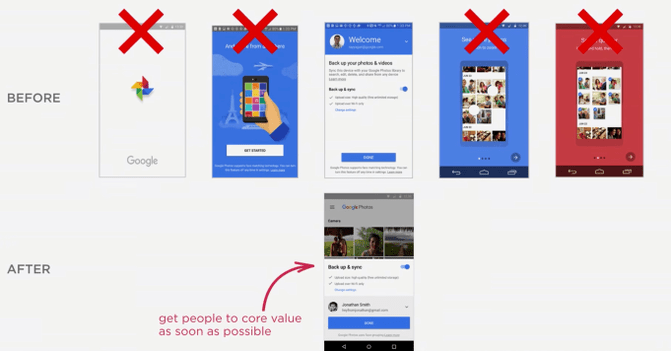
Lessons learnt
- Mobile app average retention rate is 40% after 1 month, 30% after 2 months, and 25% after 3 months
- The most critical point to keep this rate high is to deliver true value to your users — value you would yourself use
- Push notifications and onboarding are two ways to increase retention rate
- A push notification is like speaking face-to-face with someone. If you bother the person, they will just ask you to stop talking to them
- To be useful, onboarding screens must be edited to the minimum needed and just-in-time with integrated UI
Do you have any other tip to increase mobile app retention rate, without becoming a huge spam factory?

